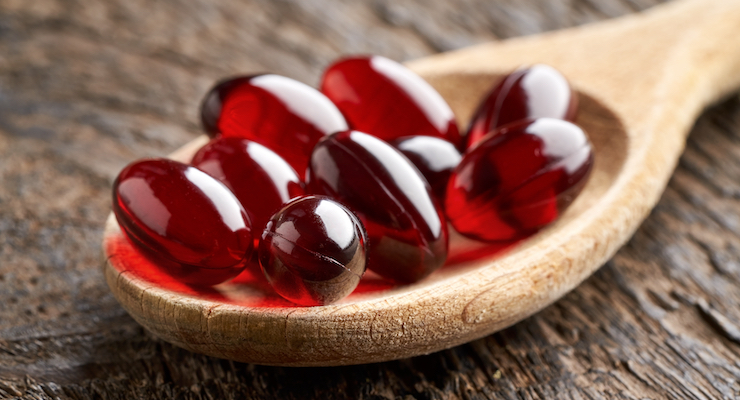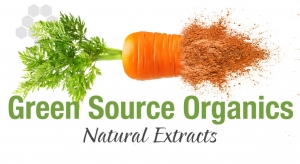12.02.21
Astaxanthin supplier AstaReal recently received a new patent based on pre-clinical research which demonstrated that the algae-sourced carotenoid could potentially modulate genes in the brain involved in learning, memory, and neuron formation, when supplementation is combined with exercise. This positions AstaReal in the areas of mood and cognitive support, the company said.
“The formation of new neurons in the adult brain is known as Adult Hippocampal Neurogenesis (AHN), which was discovered in the 1960s. Neurons can form throughout a person’s lifetime in the hippocampus; the brain’s gateway to learning and memory. However, adult neurogenesis decreases with age and with a sedentary lifestyle. One way to promote AHN is through exercise,” AstaReal reports.
The new patent on the ingredient is based on evidence that AstaReal provides a synergistic effect on exercise-induced improvements to cognitive function, specifically the domains of learning, spatial memory, and AHN, by modulating genetic expression in the hippocampus.
Human clinical studies have provided evidence that natural astaxanthin can help promote reaction time, memory, and spatial reasoning (Katagiri et. al). Preclinical studies led by Prof Hideaki Soya, for which the patent was awarded, demonstrate a potential mechanism of action for astaxanthin which may be responsible for improved cognitive performance in animal models. In the present research, combining astaxanthin with exercise increased the number of new neurons in the hippocampus (up 130% from baseline), and improved the performance of mice in a Morris Water Maze that was designed to challenge their ability to learn and to remember the location of a hidden platform in an opaque swimming pool.
Among a number of mouse protein coding genes in the hippocampus that were differently expressed only in mice treated with both mild exercise and astaxanthin, Igf1r and Igf1 stood out to the researchers. The IGF1R protein is a tyrosine kinase type receptor using IGF-1, IGF-2, and insulin as protein ligands. According to the researchers, IGF-1 transfers from blood into the brain and is linked to AHN in response to exercise, and is also linked to improvements in spatial memory controlled by the hippocampus. The AHN and spatial memory improvements in mice could be linked to a downstream effect of IGF-1 binding to IGF1R, the study concluded.
“Exercise is a multi-system intervention, meaning that it can benefit multiple organic and biological functions at once. Our capacity for exercise adaptation declines with age, and nutrigenomic interventions that help boost the effect of exercise may tip the scales toward better mobility and cognition throughout life,” Dr. Karen Hecht, scientific affairs manager for AstaReal, said.
“This new patent validates the benefit of combining mild exercise with a daily intake of Astaxanthin in improving memory and learning, which is the key for improving health span and quality of life,” Arun Nair, CEO of AstaReal, said. “AstaReal will continue its effort to investigate and elucidate the mechanism of action of Astaxanthin so that our partners can back their label claims with utmost confidence.”
“The formation of new neurons in the adult brain is known as Adult Hippocampal Neurogenesis (AHN), which was discovered in the 1960s. Neurons can form throughout a person’s lifetime in the hippocampus; the brain’s gateway to learning and memory. However, adult neurogenesis decreases with age and with a sedentary lifestyle. One way to promote AHN is through exercise,” AstaReal reports.
The new patent on the ingredient is based on evidence that AstaReal provides a synergistic effect on exercise-induced improvements to cognitive function, specifically the domains of learning, spatial memory, and AHN, by modulating genetic expression in the hippocampus.
Human clinical studies have provided evidence that natural astaxanthin can help promote reaction time, memory, and spatial reasoning (Katagiri et. al). Preclinical studies led by Prof Hideaki Soya, for which the patent was awarded, demonstrate a potential mechanism of action for astaxanthin which may be responsible for improved cognitive performance in animal models. In the present research, combining astaxanthin with exercise increased the number of new neurons in the hippocampus (up 130% from baseline), and improved the performance of mice in a Morris Water Maze that was designed to challenge their ability to learn and to remember the location of a hidden platform in an opaque swimming pool.
Among a number of mouse protein coding genes in the hippocampus that were differently expressed only in mice treated with both mild exercise and astaxanthin, Igf1r and Igf1 stood out to the researchers. The IGF1R protein is a tyrosine kinase type receptor using IGF-1, IGF-2, and insulin as protein ligands. According to the researchers, IGF-1 transfers from blood into the brain and is linked to AHN in response to exercise, and is also linked to improvements in spatial memory controlled by the hippocampus. The AHN and spatial memory improvements in mice could be linked to a downstream effect of IGF-1 binding to IGF1R, the study concluded.
“Exercise is a multi-system intervention, meaning that it can benefit multiple organic and biological functions at once. Our capacity for exercise adaptation declines with age, and nutrigenomic interventions that help boost the effect of exercise may tip the scales toward better mobility and cognition throughout life,” Dr. Karen Hecht, scientific affairs manager for AstaReal, said.
“This new patent validates the benefit of combining mild exercise with a daily intake of Astaxanthin in improving memory and learning, which is the key for improving health span and quality of life,” Arun Nair, CEO of AstaReal, said. “AstaReal will continue its effort to investigate and elucidate the mechanism of action of Astaxanthin so that our partners can back their label claims with utmost confidence.”




























